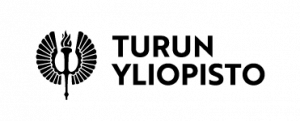
Professor Kari Lukka
Academic world of publishing is increasingly in turmoil. Old structures with big publishing houses (like Elsevier, Taylor & Francis, Emerald and Wiley) with their subscription fee -based journals are shaken by the rapidly strengthening view that published research should not be a private property of the big publishers – or anybody – but instead openly accessible to everyone. New structures are emerging and they are also actively supported at the national and international level. One important example of this is the ambitious initiative Plan S launched by a group of national research funding organisations, with the support of the European Commission and the European Research Council. I wholeheartedly support this general trend of development, but feel worried of the seeming lack of sufficient vision and realism in the implementation plans. Now more than ever is the time to have an appropriate vision, which is based on realistic reading of the current situation in the first place.
In my view, the general landscape of academic journal publishing is fundamentally unsound. Academics do most of the work, as editors and reviewers, for journals, which are mostly owned by big publishing houses, with no remuneration for their work requiring high level of scholarly expertise. When academics publish their works in these journals, they have to give most of their copyrights to the publisher as routinely accepted rule in this business. In most cases these journals are closed ones. Hence, if an academic wishes to get his/her publication openly accessible, s/he (or some party in the back) has to pay an APC (article processing charge) to the publisher (yet sometimes some version of ‘green publishing’ is possible). Academics or their universities have to pay subscription fees for most of these journals. APCs and subscription fees are notably high and significant regarding the economies of the universities. As one of the outcomes, big publishing houses are known to be highly profitable.
The above picture of the academic publishing landscape has become highly established during the last few decades, during which the volume of journal publishing has acceleratingly increased. This landscape would be at least somehow supportable, IF the publishing houses would very notably add value in the process of current academic publishing. While they may have been able to do that a decade or two ago when academic publishing in very large scale was still emerging, during the ever-increasing degree of digitalization, it is more and more difficult to see in which way the publishing houses would add value in such a way that their profits would be acceptable.
Actually, in my view there is no way any longer to find arguments for the very notable profits of the big publishing houses for their publishing of academic journals. I woke up to this issue already during being the Editor-in-Chief of European Accounting Review, a journal now at the Finnish JUFO2-level [1], for six years in 2000-2005. It became never clear for what the journal was really needing the publisher, Taylor & Francis, to formally run the journal. Was it due to the paper-printed colourful marketing leaflets that they mass-posted to academics globally and which, as all academics know, were normally waste-paper binned right upon their arrival on the office desks? During those years, we working at the editorial office of the journal started feeling that the balance of the publisher’s value added was almost negative, not least as they managed to constantly create typos to the manuscripts in a process that they called “type-setting”. This was likely due to the very aggressive outsourcing of their processes to low labour-cost countries. The only obvious thing that the big publishing houses have to offer as a kind of value added is their back-files of articles. But referring to above, even those sets of files have been acquired in a highly questionable manner by – to put it bluntly – unethically depriving academics.
The current status quo is of course supported by many structures around the closed journals, which are inclined to cement their existence and still today offer the big publishing houses chance to reap high profits. These include the high prestige of the closed journals, deriving from their often high impact factors and journal rankings (among them the Finnish JUFO). Even though there already are open access journals and in some research areas their role is already now rather notable, these tend to be new outlets, which need to earn their place in the global pecking order of journals – and this takes time. It is in the interest of academics to publish in a highly ranked journal with high impact factor; hence, often the open access journals do not even get considered when scholars ponder where to submit their works without any price sensitivity. Scholars are somewhat shielded from the high prices of scientific publishing because the subscription costs are usually paid by the library and/or funding for the APCs provided by the research funders or research organisations. Of this, the publishers are very well aware of.
By far the most promising effort to collapse paywalls is Plan S which attempts to change almost violently these conditions, but I am not sure whether this project has so far been able to bridge its good, well supportable general ambition and the situation of the academics: How can the latter be nearly forced to publish openly, if there are no such open access journals in their field that would be appreciated by their peers? Isn’t it too naïve to believe that these initiatives alone can force a major change in the business model of science publishers? The other option, to ask them to pay APCs to closed journals (even if that were supported by research funding organizations) to get their articles openly accessible is another extremely problematic option as that practice would only support the fundamentally sick status quo that we now have: APCs are not set according to the real publishing costs because the interest of scholars to publish in highly ranked journals is just inclined to increase market concentration, not competition.
The current world of academic journal publishing is simply not sustainable!
So what do? What would be the supportable vision? Well, the general aim is clear: The current unsound established system needs to be wrecked and be replaced by satisfactory arrangements of open publishing. We would need a notable set of options of open access journals to all scholarly fields and they need to replace the current closed ones. But how to get there in the best way?
One thing that has not received enough attention is the fact that digitalization has fundamentally changed the underlying economics of the publishing opportunities. A radical outcome of this is that we can quite easily imagine a nearby future where there would not be much payments at all to anybody – not only no APCs to get articles openly accessible from closed journals, but also practically no APCs of any kind to any party!
This future will be possible if academics are willing to continue volunteer working for journal publishing similarly as this far, but they would start investing their time to seriously developing open access journals, which in the increasingly digitalized world could work with very small cost. The editorial team only needs a software to run the review process and then it can be run with equally high quality as the best closed journals now do. The more senior academics could take the lead – basically without the publishers – but with the necessary administrative support provided by university libraries. No APCs as writing fees would be needed, perhaps small submission fees. Marketing would need some funding; back-issues would need a system. But the costs of arranging these are peanuts, and their volume has nothing to do with the current subscription fees or APCs charged by the big publishing houses.
In conclusion: There is no real functional or economic reason for not revolutionizing the publishing world now. We can quite easily get rid of APCs of any form – and especially, the sooner we can get rid of even the idea of paying any APCs for making closed publications of the big publishing houses open, the better. The real value-added of big publishers is today minimal and they know that. They are currently almost desperately trying to harvest the last glimpses of their profits. Once the international academe only gets the kind of snowball outlined above rolling, the now cemented looking institutional arrangements will soon collapse and become replaced by other, much healthier ones. There is no necessary need to change (practically) anything in the review processes or make any compromises regarding scholarly quality. The rising impact factors and journal rankings will follow. At least the governmental rankings like JUFO and e.g. the corresponding Norwegian and Danish systems as well as the Plan S initiative could and should strongly encourage all this. This may now look like just a dream, but starting from courageously visioning this we can make it become true – and even before long.
Professor Kari Lukka, Accounting and Finance, University of Turku
[1] JUFO Publication Forum is a classification of publication channels created by the Finnish scientific community to support the quality assessment of academic research.


I agree that the current publishing model is unsustainable. However, I differ on what needs to change because I don’t think relying on volunteering will scale or be sustainable. I think the academy needs to drop the fixation on impact factors, which is the root of publisher power, and start assessing researchers on what they publish, not where they publish. Do this and publishers will have to compete on the service they provide, not on the brands they own. My reasoning and proposal for change is in this article: https://link.growkudos.com/1e8n3jri4u8